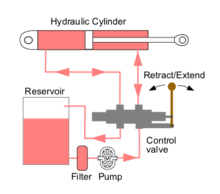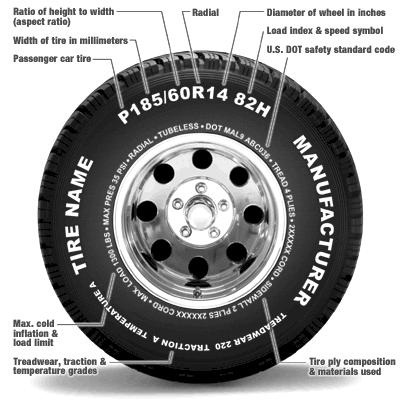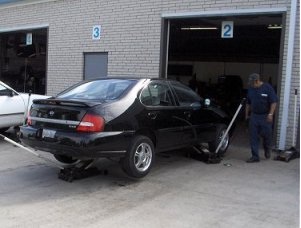
مهندسی دالوند Dalvand Engineering
وبلاگ فنی و تخصصی ماشین آلات سنگین Machinery Technics & Diesel Expert
مهندسی دالوند Dalvand Engineering
وبلاگ فنی و تخصصی ماشین آلات سنگین Machinery Technics & Diesel Expertنقش دما در خرابی های زودرس سیستم های هیدرولیک

High hydraulic fluid temperature - how it causes premature failures
I was asked recently to conduct failure analysis on two radial piston hydraulic motors that had failed well short of their expected service life. Inspection revealed that the motors had failed through inadequate lubrication, as a result of low fluid viscosity caused by excessive hydraulic fluid temperature.
How does this happen?
As the temperature of petroleum-based hydraulic fluid increases, its viscosity decreases. If fluid temperature increases to the point where viscosity falls below the level required to maintain a lubricating film between the internal parts of the component, damage will result.
The temperature at which this occurs depends on the viscosity grade of the fluid in the system. Hydraulic fluid temperatures above 180°F (82°C) damage seals and reduce the service life of the fluid. But depending on the grade of fluid, viscosity can fall to critical levels well below this temperature.
ادامه مطلب ...
مشخصات لاستیک

روی دیواره بیرونی هر تایر، اعداد و کدهای درج شده است که در حقیقت شناسنامه لاستیک خودرو هستند. در شکل مفهوم این علائم بیان شده است. در ادامه به شرح برخی از مهمترین آنها میپردازیم.
الف) اندازه تایر
اندازه لاستیک خودرو با علائمی
همچون4P185/60R13
نشانداده میشود.
که بدین معنی میباشد:
P = تایر خودروی شخصی
185= پهنای تایر
(برحسب میلیمتر)
آیا شارژ نیتروژن در لاستیک بهتراز هواست
Nitrogen: A Noble Gas?
As you can see, there are days when you just have to get your car off the ground and this was one of those days as the Altima was due for a tire rotation. My buddies up at Tire Town have taught me well and I religiously rotate my tires every 6000 miles, no longer than that, and it really seems to have worked as I'm usually getting in the neighborhood of 45,000 miles out of a set of tires.
We put a lot of miles on our vehicles. The 2001 Altima currently has 135,000 miles on it so preventive maintenance is something I believe in.
This year there's a new addition to the equipment in the garage and they have
installed a system for filling tires with nitrogen. It's a clever machine in
that it filters the air to collect the nitrogen it uses, so there are no
compressed gas cylinders to be delivered or tanks to have filled up. Nitrogen
makes up about 78.1% of the atmoshphere by volume, so there's plenty of it to
go around. One of the reasons they installed the system was because of the
consumer interest that was generated by the claims being made about using
nitrogen in your tires.
ادامه مطلب ...
